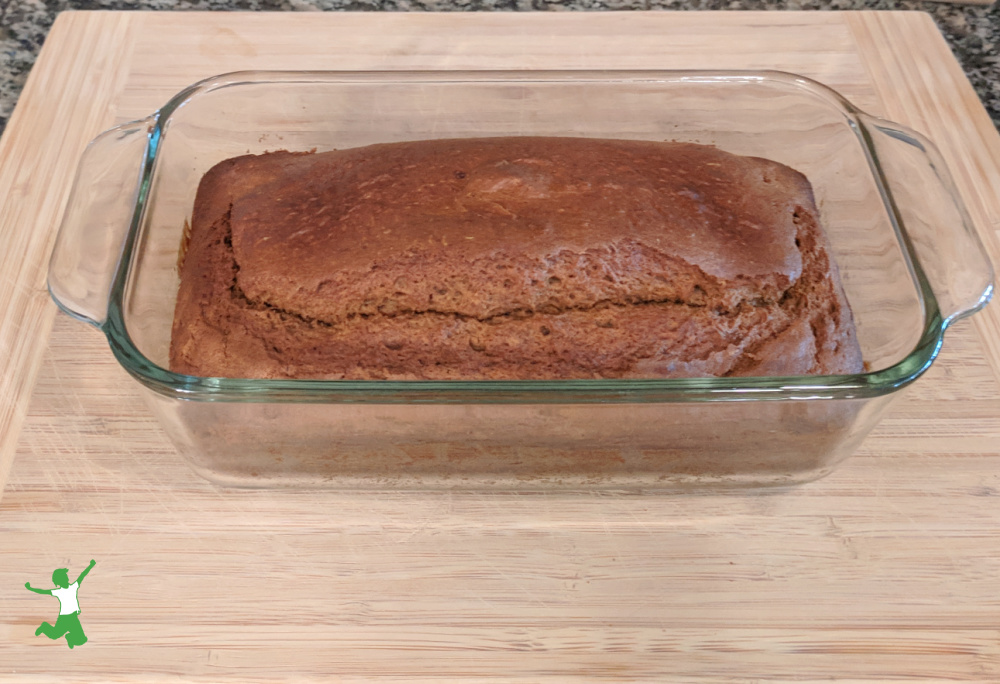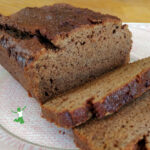A simple soaked sandwich bread recipe using kefir as the soaking medium that is light on the stomach, digestible, easy to make, soft, and delicious!

Making traditionally prepared bread by soaking flour overnight (as opposed to modern, difficult-to-digest yeasted bread) can be a bit tricky to master.
No one wants to waste quality ingredients not to mention precious time on failed attempts!
To make a long story short, it took me a little trial and error to get the recipe to work, but the results are awesome!
You can even slice the loaf for soaked sandwich bread!
*Note that the texture of soaked bread is quite a bit softer than sprouted or sourdough sandwich bread.
Please note that I only use einkorn flour to make this loaf, so if you want to try making it with another type of flour, it may take a couple of attempts to get it exactly right.
Why do I prefer einkorn as the best form of wheat?
Einkorn is the only form of nonhybridized wheat on the planet and contains good gluten (the kind many people are NOT allergic to!).
My friend Cathi who shared this recipe with me uses spelt flour. Based on our joint experience, it should work the very first try with either einkorn or spelt.
Other types of flour may take a bit of trial and error on your part to perfect.
Preparation Tips
Please note that you must soak the flour for this recipe using raw, homemade kefir made with live grains (not powdered starter).
**The dough does not rise as well if you soak the flour using raw yogurt, clabbered raw milk or buttermilk. The recipe also does not work well with plain store-bought kefir, likely because commercial versions are not fermented properly.
I recommend using unsprouted flour for this recipe. The texture turns out better. Sprouted flour is best reserved for recipes where the flour is not soaked.
Do not substitute raw honey instead of the sucanat as cooking honey is not healthy.
Once you’ve made your loaf, be sure to save the crusts! You can make homemade breadcrumbs with them!
If you love this soaked bread, try these other recipes that use soaked flour too!
- Soaked Devil’s Food Cake (yogurt works great for this recipe)
- How to Make Soaked Bread in a Bread Machine (any fermented dairy medium)
- Soaked Pancakes (dairy-free)

Soaked Sandwich Bread Recipe
Easy soaked bread recipe that can be sliced and used for sandwiches as well.
Ingredients
- 6 cups flour freshly ground einkorn or spelt recommended
- 3 cups raw kefir
- 2 Tbsp butter preferably grassfed and organic
- 1 1/2 Tbsp sucanat or organic brown cane sugar
- 1 1/2 tsp baking soda
Instructions
-
Mix 3 cups of flour and 3 cups of kefir well, cover with a clean cloth and let sit on the kitchen counter for 12-24 hours. After soaking, the dough should be liquid-y and very bubbly.
-
Add baking soda, sweetener, coconut oil or butter and 3 more cups of flour. Stick to 6 cups of flour and don’t add more even if tempted to do so based on consistency of the dough.
-
Mix well for 3-4 minutes. The resulting dough should be soft and easily workable with your hands.
-
Divide loaf into 2 … put in 2 buttered loaf pans (these are what I use) or make 1 huge loaf with a single large loaf pan.
-
Let the pan(s) sit lightly covered with a clean cloth for another 12 hours on the kitchen counter. The dough will rise nicely in the pan(s) so allow for enough room at the top or it will spill over the sides.
-
Bake at 350 ºF (177 ºC) for 30 minutes for 2 smaller loaves and 350 ºF (177 ºC) for 55 minutes for 1 large loaf of soaked bread. Check that a knife inserted in the center comes out clean to ensure that the bread is done.
-
Once cooled, slice into sandwich slices. Enjoy immediately and refrigerate what will not be used up within 24 hours.









Hi Sarah
I made this soaked loaf recipe using a hard red wheat berry and the results were fantastic!
One thing I’m wondering – can one add salt? Is there perhaps some health reason (as in combination with) that one should not add salt, or is it just preference?
Thanks for another awesome recipe!
It’s preference. Feel free to add a pinch of you like. I recommend and use this sea salt for the past few years. In my opinion, it is the absolute best on the market. https://www.thehealthyhomeeconomist.com/go/best-sea-salt/
Do you have a video of this recipe? I looked through your YouTube channel and didn’t see one, but maybe I missed it. Can’t wait to try this!
Hi Sarah,
After 48 hours using raw kefir (store bought…for pet consumption…) and einkorn (Jovial brand), it has a white “fluffy” film on top. Strong smell, with a few bubbles on top. Is the film yeast? And is still ok to use?
Thanks for any assistance.
Sounds like kahm yeast, which is not mold and not a concern. https://www.thehealthyhomeeconomist.com/mold-fermented-foods-what-to-do/
I would like to ask about dark breads like made from rye, they are very popular is my region. Usually baked with lots of seeds. Is rye also bad?
Best wishes,
Auste
My Einkorn flour just arrived today. I will make the Kefir Soaked Bread. Does this recipe make two 9×5 loaves of bread?
If you use the small glass breadpans, then yes 2 small loaves. If you use a larger breadpan, then it makes one loaf.
I made this recipe exactly as written, the bread never fully cooked. I took the loaves out after 30 mins and the dough in the center was raw (a consistency of yogurt. It actually poured onto the counter when I took them out of the pans to cool on wire racks I reheated the oven and put the loaves in for another 30 mins. It improved, but even then was not fully cooked.
You will notice that the recipe says to cook for 30 minutes OR until a knife inserted in the center comes out clean. Many times, an oven does not cook at the temperature it is set on. So, sometimes you have to cook until it is done instead of relying on a time limit. It seems there must be a problem with your oven.
Sounds amazing & I have all the ingredients to make one loaf…can this recipe work if it is halved??
I have not tried it halved, so cannot be sure.
I am lactose intolerant. Would soaking my einkorn in Keifer affect someone With a lactose intolerance? Also is there a different way to soak theeinkorn and make sandwich bread besides this particular recipe? I’ve been looking for quite a while and I was so pleased that I happened upon your recipe. I’m just unsure about Kiefer I’ve never tried to consume it.
Raw milk and raw kefir contain the enzyme lactase which is what is necessary to digest lactose. Pasteurization destroys lactase .. so you are really not lactose intolerant. You are pasteurization intolerant. My husband is lactose intolerant and does raw dairy just fine!
I followed Step 1 exactly, using homemade raw milk kefir and locally grown whole wheat flour from heirloom seed from the 1800s, but it hasn’t risen or gotten liquidy or bubbly after soaking for 22 hours. The temperature in the room is 75 degrees F. What went wrong?
Note that the dough does NOT rise from Step 1 alone. Was the flour freshly ground as called for in the recipe?
I’m preparing to make a 1/2 recipe. What size bread loaf pans do you use, or how much should the dough fill the pan before you let it sit for another 12 hours?